John Henry Theakston, like his brother, Christopher Edwin Theakston, was lucky enough to be the son of the well-known sculptor, Joseph Theakston and his wife, Elizabeth Theakston (nee Pearson). When he came into the world on 25 November 1809 in Middlesex, England, my fourth Great Uncle had the start in life that those less fortunate could only dream of.
On 17 December 1809, nearly a month after his birth, John was christened in St Mary’s Church in St Marylebone. Though details of his early childhood remain unknown, it can be assumed that due to the family’s comfortable circumstances he would’ve been sent to school.
St Mary’s Church, St Marylebone
He grew up with his parents and siblings in a north London area called Pentonville. Throughout this time it seems his father and the sculptures he created were of some influence to young John. It’s not hard to imagine why. As his father forged his way into becoming a well-known artist it started to attract visitors who enjoyed watching him work. Then there was his elder brother, Charles Delattre Theakston, who also took up sculpting. With both his father and his brother working as sculptors it probably came as no surprise to the family when John decided to follow in their footsteps.
His father was most likely the one who taught him his trade but being surrounded by other sculptors and artists such as Sir Francis Chantrey (his father’s employer) may have also helped.
By 1832, at the age of 23, he exhibited his work for the first time in the Royal Academy. He was listed as living at 35 Gillingham Street in Pimlico which, at the time, was a fairly new area of central London.
For the next six years John may have continued to work as a sculptor. He’s not listed as having exhibited his work but perhaps he was helping his father. By 1838 however a longing for adventure started calling out to him. Why, is anybody’s guess. Perhaps he was unhappy with the way his sculpting work was going (or not going). Perhaps he was feeling as if he was living in the shadow of his father and brother. Perhaps he simply wanted to try and make his fortune in a new place that needed craftsman such as himself. Nevertheless, on 31 July 1838 John boarded the ship ‘Rajasthan’ and sailed from Plymouth to South Australia.
At this time South Australia was a fledgling colony and desperately needed emigrants. Emigrants however wouldn’t readily come on their own accord; they needed something to entice them to make the move to a world so vastly different to their own. In this instance, they were enticed with free passage. The Rajasthan was one such ship that was a part of this scheme.
John was one of 254 passengers that made the journey to South Australia. He arrived on 16 November 1838 after more than three months at sea and though no actual passenger list exists, a vague list of passengers and their trades was published in the South Australian Gazette and Colonial Register.
Next to the trade ‘mason’ it’s indicated that one single man was proficient in this type of work. We can assume that this one man was John Henry Theakston.
Whether there was sufficient work for a mason in South Australia at this time is not known. Two years later however John decided to try something a little different and opened the Beulah Hotel. This also became known as the Theakston Tea Rooms.
His first order of business was to hold a ball for the public.
Despite having a decent education and the ability to read and write, it appears that John did not write home to his father throughout the time he was in Australia. Did they not have a good relationship? Could this be a possible reason as to why he left England? Whatever the case, when John’s father passed away in 1842 his Will (which was made five days before his death) was presented and in it he states that both his sons John Henry Theakston and George Alfred Theakston had been out of the country for some years and no one had heard from them. They were both presumed to be dead.
Incidentally it doesn’t appear John’s brother George travelled with him to South Australia. As yet, I have not found where George went or what became of him.
Back in South Australia I presume John continued on with the Beulah Hotel but by 1844 he embarked on a (once again) completely different adventure. The one time mason, one time publican became an explorer.
On 12 April 1844, John (aged 35) left Port Adelaide on-board the ship ‘Governor Gawler’ as second in command with his team leader, John Charles Darke and two other men. They were destined for Port Lincoln with the intention of exploring and reporting on the surrounding areas and its suitability for settlement.
They left Port Lincoln on 29 August 1844 and followed a chain of salt lakes west of the Marble Ranges. Apart from seeing grassy plains, they did not find the good land they were hoping for.
By October Darke decided to turn back. It was on the return journey that disaster struck.
The native people of the area, despite having been friendly at previous times, suddenly changed. On 23 October 1844 Darke left his tent unarmed and was speared three times. John was the first on the scene and arranged for Darke to be carried back to camp. His wounds however were too grievous and the next day, at five minutes before midnight, he passed away.
John assumed command of the small group and after burying Darke’s body on a small grassy plain at the foot of Table Topped Peaks, he successfully (which was no easy task at the time) led the party back to Port Lincoln within six days. Upon his arrival he immediately made a statement of the events to the Government Resident, Charles Driver.
John was altogether congratulated for his return to Port Lincoln and the trip as a whole for the explorers (despite Darke’s death) was still fairly successful. Apart from John’s oath made immediately after his return and the publication of Darke’s diary a few weeks later (which John ended up completing) John effectively lays low for the next few years. One hundred years later a memorial was erected in the spot where John Charles Darke was buried. The memorial states “J H Theakston assumed command of the party.”
He may have disappeared from the newspapers but it seems however he was working for John Ainsworth Horrocks on his property (Penwortham) because we next see John in 1846 when Horrocks established a party to explore the area northwest of Mount Arden. John was once again second in command and the group was accompanied (free of charge) by Samuel Thomas Gill, an artist. Several other people were also a part of the group and Horrocks was a pioneer in that he was the first person to use a camel for exploration.
The privately funded explorers left Penwortham on 29 July 1846 and after discovering the pass through the Flinders Ranges (now called Horrocks Pass) the group travelled on to Depot Creek. It was here that the main camp was established.
Depot Creek, South Australia [1846]
Painted by S.T. Gill
Unfortunately, like the Darke expedition, this one did not go according to plan. On 28 August 1846 Horrocks, Gill and another man left John in charge at Depot Creek and made their way towards Lake Dutton. Near Lake Dutton Horrocks spotted a rare bird and desiring to shoot it, went to get his gun from the camel’s back. While reloading, the camel moved which resulted in the gun being accidentally fired. The subsequent discharge took off Horrocks’s middle finger on his right hand as well as a row of teeth after entering the left side of his face.
John was immediately sent for back at the camp and the group quickly began the task of returning to Horrocks’s home at Penwortham. They arrived on the 19 September and four days later, on the 23rd, John Ainsworth Horrocks passed away as a result of his wounds.
Once again, John disappeared into obscurity. He popped up in January 1850 when he was listed as a witness to a fight but apart from this brief mention in the papers he remained frustratingly quiet. It’s believed that some time after 1850 he moved to Victoria, possibly to try his luck during the gold rush.
Sure enough, in 1869, a major Victorian newspaper, The Argus, picked up a story from a smaller newspaper, the Daylesford Mercury in which a Mr Theakston from Avoca (a prominent gold mining town) is mentioned. He was now 60 years old. This article states that his father, Joseph had designed a pair of pistol covers for the poet, Robert Burns and that in view of this fact, Sir Charles Chantrey presented them to Joseph as a gift. The pistol covers were then subsequently given to John along with the note that Chantrey’s secretary, Allan Cunningham had written to his father.
Given the lack of communication with his father up until his father’s death, I can’t help but wonder how in the world they managed to track him down.
One year later John applied through the Old Colonists’ Association to be accepted into one of their homes. The Association had only been set up in 1869 and was established to provide care and homes to the elderly. John was one of four accepted in this instance.
It’s assumed that he remained in the homes for seven more years. Sadly, John did not fare well in old age. On 27 December 1877 he was committed to the Ararat Asylum; his last residence being Deep Lead, Avoca. The records state “Address of friends not known”.
He received some pecuniary assistance from John Ainsworth Horrocks’s friends in England but apart from this, he lived out the remainder of his life in destitution in the asylum. John Henry Theakston died on 27 March 1878 at the age of 68. He was recorded as suffering from disease of the brain and kidneys and was buried in the Ararat Cemetery two days later. Further particulars as to where he was born and the name of his parents were recorded as unknown.
John Henry Theakston, and his life, is one of immense fascination. He emigrated from a completely different country and wound up an explorer and, assumedly, an experienced bushman. Along with Darke and Horrocks he helped explore country that was relatively unknown to Europeans at the time. These were brave men, tackling an alien world. He may have died alone in an asylum but an obituary printed in the South Australian Register shows that he was by no means forgotten.
…an early pioneer in this colony, who was liked by all who knew him during the days when the North was first settled.
Sources:
- “England Births and Christenings, 1538-1975,” index, FamilySearch (https://familysearch.org/pal:/MM9.1.1/NPQD-6MG : accessed 04 May 2013), John Henry Theakston, 25 Nov 1809.
- Photo of St Mary’s Church in St Marylebone obtained courtesy of Wikipedia (http://en.wikipedia.org/wiki/St_Marylebone_Parish_Church).
- Information on Joseph Theakston from The Gentleman’s Magazine, Volume 171, page 672.
- A Biographical Dictionary of Sculptors in Britain, 1660-1851 (http://217.204.55.158/henrymoore/index.php).
- South Australian Packet Ship image and other shipping information obtained courtesy of: Pioneers and and Settlers Bound for South Australia – Rajasthan 1838 (http://www.slsa.sa.gov.au/fh/passengerlists/1838Rajasthan.htm
- 1838 ‘Advertising.’, South Australian Gazette and Colonial Register (Adelaide, SA : 1836 – 1839), 24 November, p. 1, viewed 12 January, 2013, http://nla.gov.au/nla.news-article31750260
- 1840 ‘Advertising.’, South Australian Register (Adelaide, SA : 1839 – 1900), 10 October, p. 2, viewed 12 January, 2013, http://nla.gov.au/nla.news-article27441905
- 1840 ‘Advertising.’, Southern Australian (Adelaide, SA : 1838 – 1844), 1 December, p. 2, viewed 12 January, 2013, http://nla.gov.au/nla.news-article71620432
- Joseph Theakston’s Will courtesy of The National Archives (Probate reference: 11/1971).
- Information on the John Charles Darke and the expedition courtesy of the Australian Dictionary of Biography (http://adb.anu.edu.au/biography/darke-john-charles-1955).
- 1844 ‘SOUTH AUSTRALIA.’, South Australian (Adelaide, SA : 1844 – 1851), 8 November, p. 2, viewed 4 May, 2013, http://nla.gov.au/nla.news-article71613292
- 1941 ‘THE THEAKSTONE’S AND J. H. THEAKSTON.’, Port Lincoln Times (SA : 1927 – 1954), 29 May, p. 2, viewed 4 May, 2013, http://nla.gov.au/nla.news-article96755374
- 1844 ‘MR. DARKE’S EXPEDITION.’, South Australian (Adelaide, SA : 1844 – 1851), 15 November, p. 3, viewed 4 May, 2013, http://nla.gov.au/nla.news-article71613354
- The photo of the memorial plaque for John Charles Darke obtained courtesy of the State Library of South Australia (Call No. B 22200 [http://images.slsa.sa.gov.au/mpcimg/22250/B22200.htm]).
- Photo of Depot Creek courtesy of the National Library of Australia (Gill, Samuel Thomas 1846, Waterplace, Depot Creek, Augst. 27th) http://nla.gov.au/nla.pic-an2377299
- 1846 ‘MR. J. A. HORROCKS’S EXPEDITION TO THE NORTH WEST.’, South Australian (Adelaide, SA : 1844 – 1851), 22 September, p. 5, viewed 4 May, 2013, http://nla.gov.au/nla.news-article71605888
- Information on John Ainsworth Horrocks courtesy of the Australian Dictionary of Biography (http://adb.anu.edu.au/biography/horrocks-john-ainsworth-12989).
- 1850 ‘POLICE COURT.’, South Australian (Adelaide, SA : 1844 – 1851), 4 January, p. 4, viewed 4 May, 2013, http://nla.gov.au/nla.news-article71625400
- 1869 ‘COUNTRY NEWS.’, The Argus (Melbourne, Vic. : 1848 – 1957), 21 December, p. 1 Supplement: The Argus Supplement, viewed 4 May, 2013, http://nla.gov.au/nla.news-article5809172
- 1870 ‘SATURDAY, DECEMBER 24, 1870.’, The Argus (Melbourne, Vic. : 1848 – 1957), 24 December, p. 4, viewed 4 May, 2013, http://nla.gov.au/nla.news-article5839917
- Information on the Old Colonists’ Association of Victoria (http://www.ocav.asn.au/index.htm).
- Alphabetical Lists of Patients in Asylums (Series: VPRS 7446; Consignment No. P0001; Unit No. 3; Page 69) [Public Record Office Victoria]
- 1878 ‘OBITUARY.’, South Australian Register (Adelaide, SA : 1839 – 1900), 16 May, p. 6 Supplement: Supplement to the South Australian Register., viewed 4 May, 2013, http://nla.gov.au/nla.news-article42982925

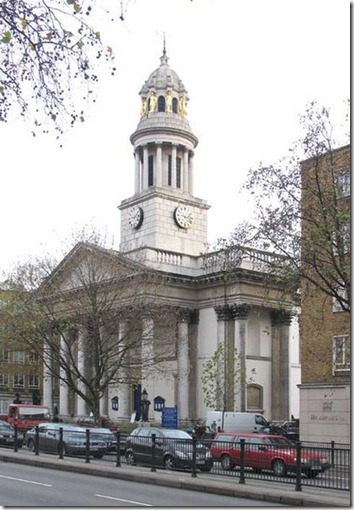
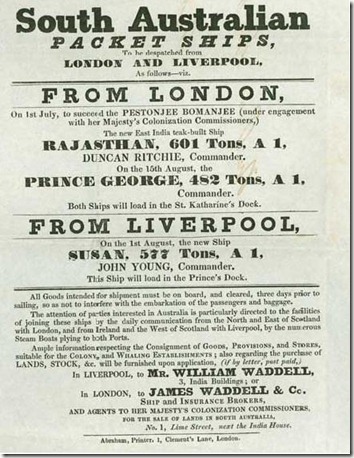
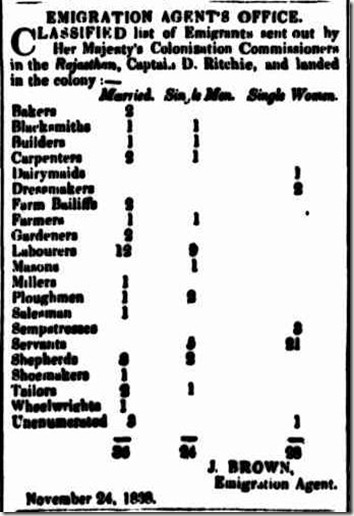

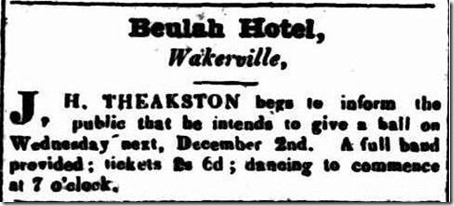
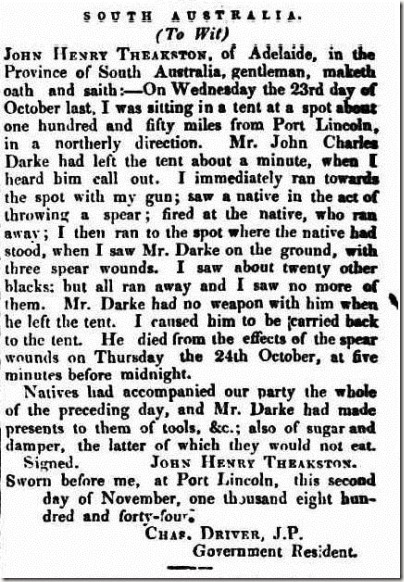

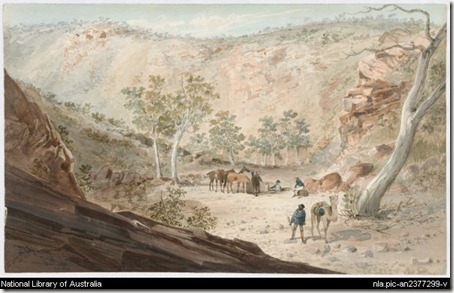


Did you know that there’s a beer made in England with the most wonderful name of ‘Theakston’s Old Peculiar’. I wonder if there’s a connection? Isnt it a fantastic name for a drink anyway??
It is a wondeful name! I’m not sure about the connection either. I have seen the Theakstons and their brewery around on the internet but I haven’t yet figured out if there’s a connection to them. Thanks for stopping by and leaving a comment. 🙂
Great research Jess
Thanks Neville! I couldn’t believe how gigantic the source list at the end was. It just kept growing! haha 🙂
Hi Jess,
Thank you so much for your contribution. I am descended from “Harris” mentioned in the introduction. I have been searching for years for Darke’s journal. This year the family descendants are commemorating the original trek by Cummings and Harris. My grandmother married the son of Cummings – quite some story. Love to hear from you. BTW have you ever found any descendants of John Charles Darke? I beleive he died within a year of marrying but he did have nieces I think??
You’re most welcome Karen! Commemorating the original trek sounds like a wonderful way to honour your ancestor’s memories. 🙂 I haven’t researched John Charles Darke as such but the Australian Dictionary of Biography lists that he married Elizabeth Carter (http://adb.anu.edu.au/biography/darke-john-charles-1955). It makes no mention of children but it states that he had a brother, William Wedge Darke so it’s possible John may have had nieces. Sorry I can’t be of much more help. Thanks for reading and for leaving a comment. 🙂
Hi Karen
I am a relative of John Charles Darke.
He is my 3rd Great Grand Uncle!
Kind regards
Sally
I just found your blog via Inside History Magazine on Facebook and greatly enjoyed reading about John Henry. Most of my ancestors came to South Australia. I live in Adelaide and love reading SA history.
Thanks Kylie! I’m glad you enjoyed reading about John’s life. 🙂
Hi Jess, Can appreciate all the research that went into this. In case you are interested – the Beulah Hotel and tea gardens were on the banks of the Torrens in Walkerville where Smith Street intersects Walkerville Terrace. It would have been a lovely spot. It’s first licence was issued in March 1839 (only 3 months after the township was surveyed) to Peter Lawes who named it Walker’s Arms. Theakston was the last owner. The Walker’s Arms licence was transferred in 1847 to its present site on North East Road.
Hi Lyn,
Thanks for stopping by and leaving a comment. 🙂 I hope you enjoyed John’s story.
Thank you also for the additional information regarding where the Beulah Hotel would’ve been located. I just googled it and it does look like a lovely spot – I can only imagine what it looked like back then!
Hi Jess,
I am doing research into the surname Thaxton/Thackston/Theakston etc, here in North Carolina. I stumbled across this entry for John Henry Theakston and am impressed with how much you’ve uncovered.
My hope is to trace my father’s ancestors back to the first immigrants to arrive from England. At the moment, I am relatively certain of findings back to an Abel Thaxton born at the start of the 18th century in southern Virginia. Without making a trip there to check records offices, I have been unable to find no reliable info on his ancestors.
Do you have any tips for online research? I noticed your note for England Births and Christenings, 1538-1975 and have begun exploring it. Super. But that’s somewhat aimless until I can identify an ancestor who immigrated from England. Are you aware of a similar site that lists death certificates? Or do you know of any pay sites such as ancestry.com that are worth the money and reliable?
I understand your passion and admire your writing. Once I begin, I often stay up all night following leads.
Thanks
Michael
Thanks Michael! Glad to hear you enjoyed John Henry Theakston’s story. He’s certainly a fascinating man! For online research (UK in particular) I recommend Family Search (https://familysearch.org/) and even at times FreeReg (http://www.freereg.org.uk/). Family Search has quite a lot of records online (births, deaths, marriages and censuses) and FreeReg has baptisms, burials and marriages in the UK but they haven’t all been transcribed yet. I’m afraid I can’t comment on any other pay site besides Ancestry. I’ve been subscribed to Ancestry for several years and I’ve obtained lots of records through them. The other site which may be worth checking out is Find My Past (http://www.findmypast.com/). I hope this info helps. Thanks for your comment! It’s nice to know there are like-minded people out there in the world as equally obsessed with family history as I am. 🙂
Thanks and a happy new year to you, Jess.
Hi Jess,
Loved reading your research. Well done.
I am a relative of John Charles Darke!
He is my 3rd Great Grand Uncle.
I have been researching J C Darke for a few years now and am putting together a bit of information.
I live in South Australia.
Thanks
Sally
Hi Sally,
It’s wonderful to hear from another relative of John Charles Darke! The story of the early explorers is a fascinating one especially given how different Australia would’ve looked back then. Good luck with your research. If you happen to find any new information regarding John Henry Theakston please do not hesitate to email me at: findingfamily@hotmail.com.au 🙂